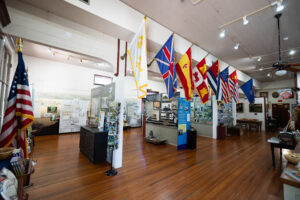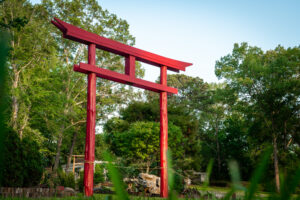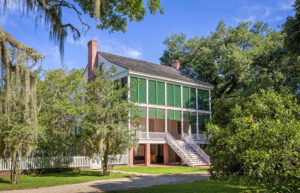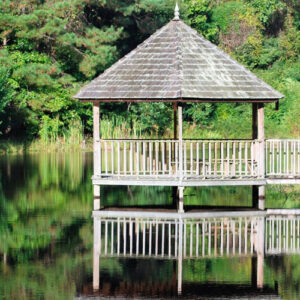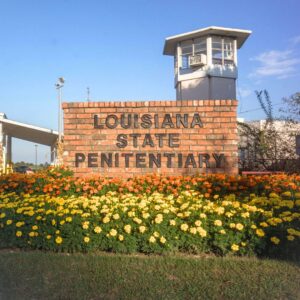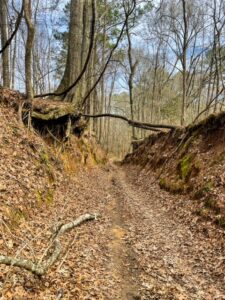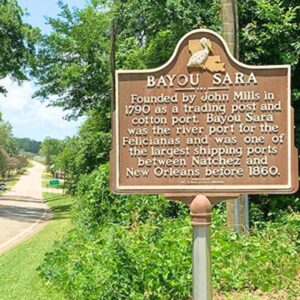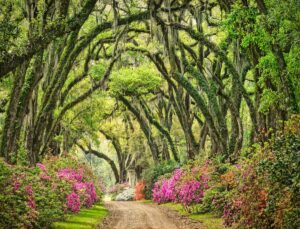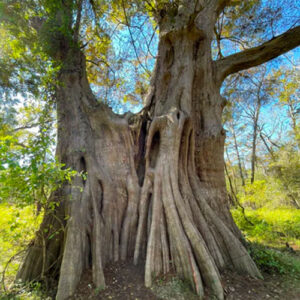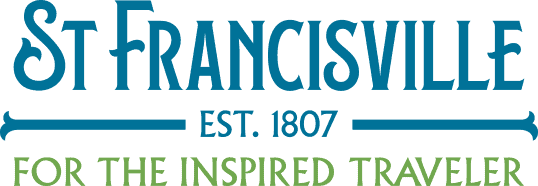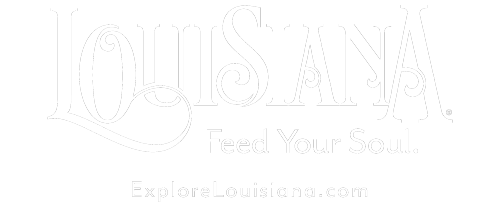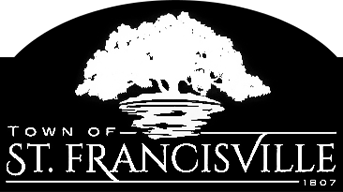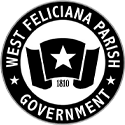During the last Ice Age, sediment deposits carried down from the Midwest by the Mississippi River were blown to its eastern banks and helped create the fertile soil and rolling hills that make West Feliciana Parish’s topography so unique. It allowed for hardwood forests to thrive and deep ravines to form.
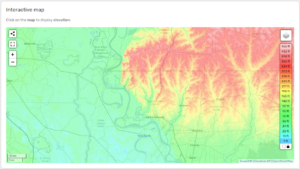
(Check out an interactive topographic map of West Feliciana here)
Over the centuries, Native American tribes carved out roads and trade routes through the hills, most of which you can still use today! Beautiful oak trees, pine trees, and other hardwoods form mystical canopies over the roads. It’ll make you feel like you’re driving through a magical forest. Many locals drive down these backroads as a way to winddown on a Sunday afternoon. The new Feliciana Backroads Trail now gives you the directions you need to explore this unique slice of Louisiana! Don’t forget to make stops along the way at some incredibly interesting attractions, like Audubon State Historic Site or the Louisiana Prison Museum and Cultural Center. Continue reading to learn more about all of the stops along the trail!
West Feliciana Historical Society Museum
The West Feliciana Historical Society Museum is a free museum on the history of Bayou Sara and St. Francisville. There you’ll learn about the Native American Tribes, like the Houma and Tunica tribes, that lived in the area before European colonizers arrived. The history journey continues as the exhibits take you through the timeline of Bayou Sara, which was one of the most important port cities on the Mississippi between New Orleans and Memphis before it was destroyed by multiple floods and fires. You’ll also learn about the time that St. Francisville was the capital of the Republic of West Florida for 74 days before being annexed by the United States. The Museum is also a great place to get information of what to do and see in town, with complimentary maps and brochures available.
Hemingbough Gardens
Hemingbough is a sprawling property that features event spaces, a Greek-style amphitheater that overlooks a lake, and multiple gardens. One of the Gardens is a Japanese Garden designed by Walter Imahara. The garden features a monument that was built by Imahara’s great grandfather for his Samurai son that was killed in battle. The monument was outside a Buddhist temple in Hiroshima when the atomic bomb fell on the city. Imahara was later allowed to move the monument to St. Francisville, where it remains today for the world to see. Entrance to Hemingbough is free.
Audubon State Historic Site
Audubon State Historic Site is a state park where you’ll find birding trails, a museum, and Oakley House. Oakley House is a plantation that was built in 1814. The artist, John James Audubon stayed there in 1821 as a tutor. While there, he explored West Feliciana Parish and it’s wildlife. He would document and paint birds for his famous “Birds of America” series; you can see some of the originals in the museum! You can also take a tour of Oakley House and learn about the people that lived there, including the slaves and owners. They also conduct programs throughout the year that do a deep dive into the history of not only the property, but also major historical events that took place in West Feliciana Parish. Admission to the grounds varies, you can see the fee scale here.
Mary Ann Brown Preserve
Mary Ann Brown Preserve will give you the opportunity to be one with nature by taking short hikes through the hardwood forest of the backroads. There are multiple paths that can be completed within 30 minutes to an hour. It’s a great stop for a picnic along the route as well. Don’t forget to bring some snacks for the turtles in the pond! It is free to enter the preserve.
Louisiana Prison Museum and Cultural Center
After a great scenic drive through the northern part of West Feliciana Parish, you’ll arrive at the Louisiana Prison Museum and Cultural Center (formally Angola Prison Museum). The museum explores the history of the oldest prison in Louisiana and the only maxim security prison in the state. It also highlights the different films that were filmed on site. Admission is $5 per person (groups of 10 or more is $3 per person).
Tunica Hills Wildlife Management Area
Tunica Hills WMA is one of the most unique areas in the South. You’ll drive along Old Tunica Trace, which is one of the “sunken roads” that were carved out by Native American tribes, which is part of the Natchez Trace system. You can also stop and take a hike on any of the many trails. The trails will take you to outlooks where you can see over trees, and then through sandy-bottomed creek beds. Be on the lookout for chipmunks as well! There is no fee to hike.
Captain Bennet Mississippi River Landing
Before the John James Audubon Bridge was completed a few years back, there was a ferry that connected Pointe Coupee and West Feliciana Parish. The ferry landing now serves as a public boat launch. Even if you don’t have a boat, it is a great place to see the mighty Mississippi. The landing is also where Bayou Sara, the port city you may have learned about at the West Feliciana Parish Museum, once stood. This is a great last stop on the Feliciana Backroads trail, because you can easily make your way back to St. Francisville to continue exploring the historic and vibrant town! This space is free and open to the public.
Two Seasonal Alternative Routes
After you drive through Tunica Hills WMA, the trail offers two diverging routes that will allow you to explore some truly captivating attractions. Both are only open seasonally, so if they’re something you’d like to experience, plan accordingly.
Afton Villa Gardens
Afton Villa Gardens are only open from March 1st to June 30th and from October 1st to November 30th every year. The Gardens were once a sprawling plantation that burnt down in the 1960s. The new owners transformed the ruins in to seasonal gardens that bring color and wildlife. The original home also had beautiful European inspired gardens that still remain in place today. Some of the most popular times to go are during the Azalea Bloom peak in early to mid-March every year. It is $5 per person to enter. Cash only. Extra fees are added if you would like to bring in a professional camera/photographer.
Cat Island National Wildlife Refuge
Cat Island NWR is one of the lowest points in the parish. So you can drive from on top of the Tunica Hills at around 300 feet above sea level, to the low swamp lands of the refuge. Cat Island features multiple hiking trails where you can spot some incredible wildlife, like birds, alligators, and maybe even a deer or two. Because of the low elevation, the refuge is typically close mid-spring to late summer due to higher water levels on the Mississippi River. One of the must-see spots in Cat Island is the National Champion Bald Cypress tree. It is the largest bald cypress in the United States, and the largest tree of any species east of the Sierra Nevada Mountains. Entrance into the refuge is free.
Like much of Louisiana, West Feliciana Parish offers any visitor so much to see and do. The Feliciana Backroads Trail is perfect for motorists and cyclists, as it highlights the many wonderful attractions and sights. If you’re driving, the trail can be completed within a half day depending on how long you stay at each stop. There are a few places to stay along the trail, in case you’d like to add more to your adventure! Check out the full list of West Feliciana accommodations here. Add this to your itinerary next time you visit St. Francisville and West Feliciana Parish, you won’t regret it!
To download the brochure and Google Map directions, click here.
